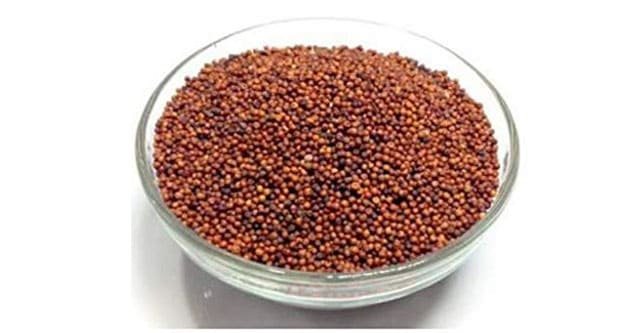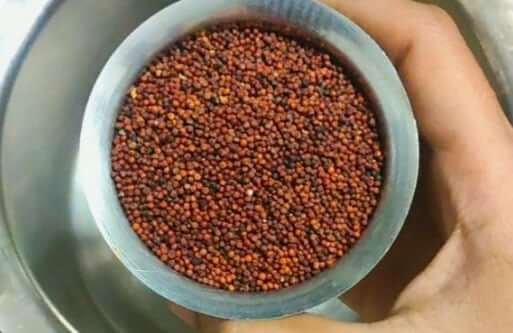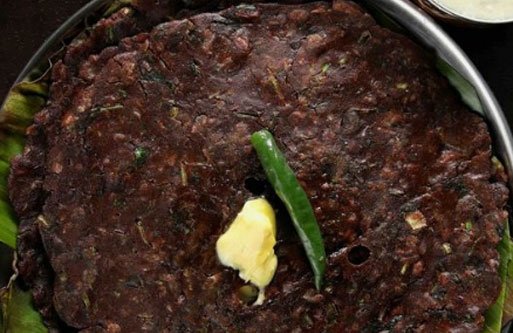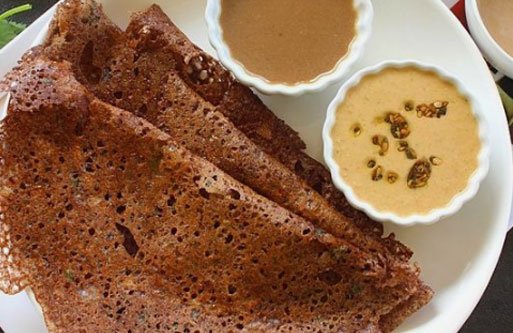Last Updated on January 23, 2021 by Dr Sharon Baisil MD
Healthy eating habits are the key to a maintained and healthy lifestyle. It is the least one can do to ensure that the body is properly functional and does not hamper other everyday work and life issues.
Switching to healthy food and sticking to nutritionally rich diet plans is the way to make sure that you keep your body well running. One of the very well-known healthy foods is millets. Finger millets are a type of it that works wonders for the body.
Are you wondering …?
- What are finger millets/ Ragi?
- Is it healthy?
- Can diabetics eat Ragi?
- What are its calories?
- What are its nutritional values?
- What are the benefits of eating Ragi?
Well, worry, not. We are here to solve these doubts and clear the answers to these questions. So let us start with knowing what it is.
What is Ragi/ Finger Millets?
Ragi or otherwise known as Finger Millets are various cereal grains obtained from an herbaceous play kingdom family. They are used as whole grains and often added as an ingredient to multigrain products.
It looks like small rounded grains, almost resembling mustard seeds. Ragi or finger millets are also used to make flour.
Ragi is commonly used in Indian kitchens. It is often substituted in place of regular cereals such as rice and refined wheat. Finger millets are often the most widely used variety of millets.
They are used in various recipes and can be used in breakfast porridge, sweets, and desserts such as laddoos, as a rice grain replacement, etc.
__________________________________
⭐ Check out this Flipbook with 30-Day Diabetic Meal Plan based on Foods from Each Indian State ⭐
(click on the ▶ arrow below to scroll the pages and 🔍 button to enlarge)
_____________________________
Millets are good sources to obtain your everyday nutritional needs. They are rich sources of protein and fiber, two very important dietary elements in everyday life.
Proteins help in maintaining and managing the formation and function in the body. They are the body’s building blocks and carry out the development and repair of the body’s basic elements.
Fiber is another nutrient that ensures a safe and healthy working of the body. The fiber is essential to improve metabolic functioning and assure safe and slow digestion that keeps the body healthy. It also helps in keeping away the manifestations of many chronic metabolic ailments in the body.
We will tell you about the nutritional components of Ragi as we move on. But first, let us find out if Ragi is healthy for the body.
Is Ragi a Healthy Food?
As we already discussed, the outer covering retention of this grain added with its protein and fiber resources make it a fit food choice for anyone looking for a healthy food schedule.
Finger millets are known for their wide range of minerals and vitamins too. They help in the maintenance and management of various functions in the body.
Switching to Ragi can be very beneficial to the body as it can reduce the overall calorie intake. We will clarify the calorie quantity of Ragi later in this article.
Ragi flour is also appreciated a lot for its nutritional richness and low-Carb quality.
The most commendable quality of Ragi is that it is – free of Gluten. Gluten is an element that often leads to allergies and problems with indigestion.
Wheat and other regular grains include Gluten. They are hence, not so safe or even recommended for someone suffering from celiac disease.
Ragi is also a nutritionally assured grain as it is inclusive of its germ and bran covering. This layer is the one that adds all the goodness in Ragi. It is filled with helpful nutrients.
The refining processes that rice or wheat grains go through take off their germ and bran outer layer. This makes them high in only starch, which is direct sugar. Unlike this is Ragi, whose outer layering is preserved and classified as a whole grain.
But is this safe for diabetics? Blood sugar patients have to be more careful about what they should eat and what should be avoided.
Thus, it is necessary to cover all considerations, risks, benefits, etc., of Ragi before adding it to your diabetic meals. It is safe and better to learn about food when you are diagnosed with diabetes. Let us acknowledge you with some basic facts.
Is Ragi safe for Diabetics?
Millets are a good addition to any diabetic diet. They are safe, provide nourishment, and also stabilize the blood sugar levels in the body. Similarly, being a type of millet, the Ragi is also an excellent item to add to anyone’s diabetes-specific diet.
Finger millets help to keep the blood sugar levels in the body stable and out of imbalance. They are also great for keeping body weight under control. Keeping weight issues out of the way and maintaining a healthy weight is very necessary for diabetic patients.
Moreover, Ragi is also rich in a lot of vitamins and minerals. This helps to keep the body nourished and rich in anti-oxidants. They help to keep away the manifestation of various serious ailments caused in the body due to free radicals.
In addition to that, the nutritional values of finger millets also assist in reducing the amount of oxidative stress in the body. It is important to keep oxidative stress levels under control as they are responsible for the severing of many already existing health symptoms brought on with the diagnosis of diabetes.
Millets are also rich in good carbohydrates and fiber that keep the risks of rising sugar levels away. Thus, it is often recommended for diabetics to use finger millets as a grain alternative.
What is the Glycemic Index of Ragi?
The Glycemic Index of food is an accurate measure to determine the safety of a particular food. It is a measure that considers the number of carbohydrates found in specific food and what its effects on the body would be.
The food is then categorized under any of the three Glycemic Index ranges as per its measurements on a scale of 0 to 100. The three Glycemic Index categories are:
| Sl. No. | Glycemic Index categories | Glycemic Index ranges |
| 1. | Low Glycemic Index (safe for diabetics) | 0 to 55 |
| 2. | Medium Glycemic Index (safe if taken in controlled quantities) | 55 to 69 |
| 3. | High Glycemic Index (unsafe for diabetics) | From 70 and above |
The Glycemic Index of finger millets or Ragi is 71. This means that it is on the higher side of the Glycemic Index range. But take into notice that this is the Glycemic Index measure of Ragi when it is raw.
Cooking plays an essential role in altering the GI of foods. Upon cooking, the glycemic index of Ragi comes down to around 55. It is thus in a low to medium range.
Hence, we can say that according to its glycemic measures, Ragi is assured to be a safe food item.
What are the calories of Ragi?
Counting calories is a simple and appropriate technique to determine the goodness of food on one’s health and overall body.
To have an in-depth account of its safety, let us look at what the Calories of Ragi are.
- 100 grams of raw Ragi account for 378 calories. This is not a very high number. Moreover, the amount of calories reduces upon cooking it properly.
- The regular serving size of Ragi is one cup, that is, 200 grams. Thus, be careful and decide your portions wisely as per the mentioned calories and portion size to suit your body and health.
What are the nutritional details of 100g of Ragi?
To understand any food and its potential benefits, it is necessary to look at its nutrition facts.
They give an inner look at the composition of the food and how it will influence the body.
Given below are a table showing the nutrients and their amounts found in 100 grams of raw Ragi:
| Sl. No. | Nutrients available in 100 g raw Ragi | Amount available |
| 1. | Calories | 387 |
| 2. | Cholesterol | 0 |
| 3. | Proteins | 11.02 g |
| 4. | Carbohydrates
– Dietary fiber – Sugar |
73 g
– 9 g – 0 g |
| 5. | Fats | |
| 6. | Water | 8.67 g |
| 7. | Vitamin B1 | 0.421 |
| 8. | Folate | 85 |
| 9. | Vitamin B2 | 0.29 |
| 10. | Vitamin B6 | 0.384 |
| 11. | Vitamin B3 | 4.72 |
| 12. | Vitamin B5 | 0.848 |
| 13. | Vitamin K | 0.9 |
| 14. | Vitamin E | 0.05 |
| 15. | Sodium | 5 mg |
| 16. | Calcium | 8 mg |
| 17. | Selenium | 2.7 mg |
| 18. | Potassium | 195 mg |
| 19. | Zinc | 1.68 mg |
| 20. | Manganese | 1.632 mg |
| 21. | Iron | 3.01 mg |
| 22. | Phosphorus | 285 mg |
| 23. | Copper | 0.75 mg |
| 24. | Magnesium | 114 mg |
What are the health benefits of eating Ragi?
Until now, we praised Ragi for the numerous health advantages it provides. Let us know what those are. Following are the health benefits of eating Ragi:
- Ragi is very high in protein and can supply the body with the necessary amounts of it. Vegetarians can gain a good portion of proteins from Ragi.
- Ragi supplies the body with a lot of calcium. It is important for maintaining healthy bone density and health.
- It is also rich in other helpful minerals such as phosphorus, iron, potassium, etc. They help in marinating overall health and also keep hemoglobin levels managed.
- It is good to cure inflammation caused in the body. Ragi is said to have anti-microbial qualities that keep issues such as food poisoning away.
- As we already mentioned, Ragi also has anti-oxidants. They protect against free radicals and also work as anti-cancer agents safeguarding the body.
References
- https://pubmed.ncbi.nlm.nih.gov/23522794/
- https://pubmed.ncbi.nlm.nih.gov/29595341/
- https://pubmed.ncbi.nlm.nih.gov/31001005/
- https://pubmed.ncbi.nlm.nih.gov/26396299/
- https://pubmed.ncbi.nlm.nih.gov/32035074/
- https://pubmed.ncbi.nlm.nih.gov/29067855/
- https://pubmed.ncbi.nlm.nih.gov/20431801/
- https://pubmed.ncbi.nlm.nih.gov/32076062/
- https://pubmed.ncbi.nlm.nih.gov/24352140/
- https://pubmed.ncbi.nlm.nih.gov/3231591/














